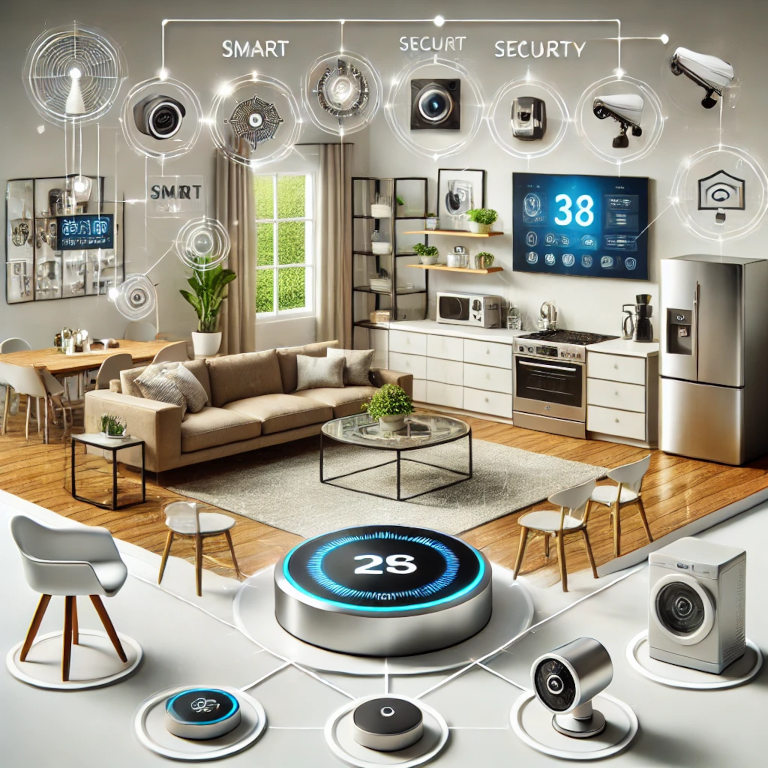Home automation systems are revolutionizing the way we live by integrating technology into everyday tasks, making our homes smarter, more efficient, and more convenient. These systems enable you to control various aspects of your home environment with ease, enhancing comfort, security, and energy efficiency. As an expert in Home Living, I will guide you through the essentials of home automation systems, their benefits, and how to implement them in your home.
Understanding Home Automation Systems
Home automation systems, also known as smart home systems, involve the use of internet-connected devices to monitor and manage various home functions such as lighting, heating, security, and entertainment. These systems can be controlled remotely via smartphones, tablets, or voice-activated assistants, offering unparalleled convenience and control.
Key Components of Home Automation Systems
- Smart Lighting: Smart lighting systems allow you to control the lighting in your home remotely. You can adjust the brightness, color, and even set schedules for lights to turn on or off automatically. This not only adds convenience but also helps in saving energy.
- Smart Thermostats: Smart thermostats learn your schedule and preferences to optimize heating and cooling in your home. They can be controlled remotely and can significantly reduce energy consumption by adjusting temperatures based on whether you are home or away.
- Security Systems: Home automation enhances security through smart locks, cameras, and alarm systems. You can monitor your home in real-time, receive alerts about suspicious activities, and control access to your home remotely.
- Smart Appliances: From refrigerators that keep track of your groceries to ovens that you can preheat from your phone, smart appliances add a new level of convenience to your daily routines. These appliances can also provide energy usage reports and maintenance reminders.
- Home Entertainment: Home automation systems can integrate with your entertainment devices, allowing you to control your TV, audio systems, and streaming services with a single remote or voice command. You can create customized scenes for movie nights or parties with ease.
- Smart Plugs and Outlets: These devices allow you to control any appliance that plugs into a wall socket. You can turn devices on or off remotely, set schedules, and monitor energy usage, making it easy to manage your home’s energy consumption.
Benefits of Home Automation Systems
- Convenience: The ability to control various aspects of your home environment from a single device offers unmatched convenience. Whether you are adjusting the thermostat from your bed or turning off lights from your office, home automation makes life easier.
- Energy Efficiency: Home automation systems help in reducing energy consumption by optimizing the use of lighting, heating, and cooling. Smart thermostats, energy-efficient appliances, and scheduled lighting can lead to significant savings on your energy bills.
- Enhanced Security: Automated security systems provide peace of mind by allowing you to monitor your home in real-time, control access remotely, and receive instant alerts about potential security threats.
- Comfort and Customization: Home automation systems can be customized to fit your lifestyle and preferences. You can create schedules, set scenes, and automate routines to make your home environment as comfortable and personalized as possible.
- Remote Access: With home automation, you can control and monitor your home from anywhere in the world. This is particularly useful for frequent travelers or those with second homes, as it allows you to manage your property remotely.
How to Implement Home Automation Systems
- Assess Your Needs: Determine which aspects of your home you want to automate. Consider your daily routines, energy usage, security needs, and entertainment preferences to identify the most beneficial automation features for your home.
- Choose a Hub: A smart home hub acts as the central control point for all your devices. Popular options include Amazon Echo, Google Home, and Apple HomeKit. Choose a hub that is compatible with the devices you plan to use.
- Select Compatible Devices: Ensure that the smart devices you choose are compatible with your chosen hub. Look for devices that offer integration with your existing systems and are easy to install and use.
- Install and Configure: Follow the manufacturer’s instructions to install and set up your devices. This may involve connecting them to your Wi-Fi network, downloading associated apps, and configuring settings according to your preferences.
- Create Automation Routines: Use the app associated with your smart home hub to create automation routines. For example, you can set your lights to turn on at sunset, your thermostat to lower the temperature when you leave for work, or your security cameras to activate when you go to bed.
- Monitor and Adjust: Regularly monitor your home automation system to ensure it is functioning as expected. Make adjustments to schedules, routines, and settings as needed to optimize performance and convenience.
Summary
Home automation systems offer a seamless blend of technology and convenience, transforming the way we manage our home environments. By integrating smart lighting, thermostats, security systems, appliances, and entertainment devices, you can enhance comfort, security, and energy efficiency in your home. Assess your needs, choose compatible devices, and create customized automation routines to make the most of your smart home system. Embrace the future of home living with home automation and enjoy a more connected, efficient, and comfortable lifestyle.






